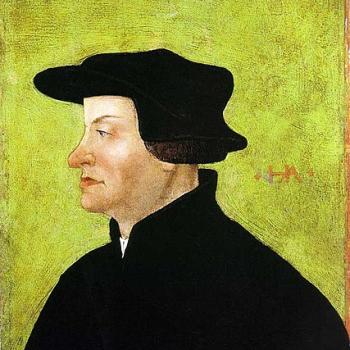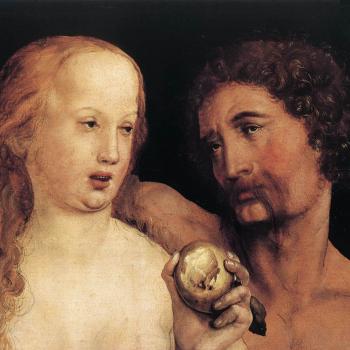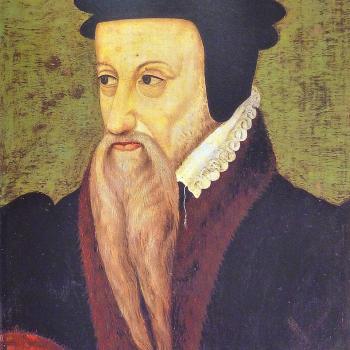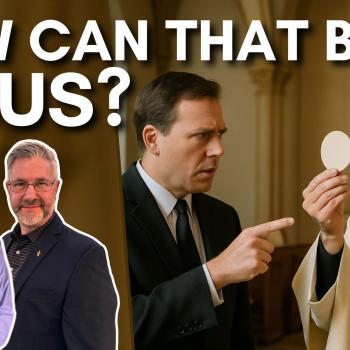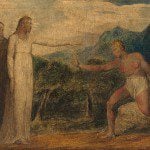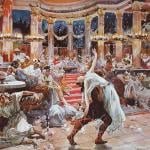
Norman L. Geisler (1932 – 2019) was an American Protestant theologian, philosopher, and apologist. He obtained an M.A. in theology from Wheaton College and a Ph.D. in philosophy from Loyola University, and made scholarly contributions to the subjects of classical Christian apologetics, systematic theology, philosophy of religion, Calvinism, Catholicism, biblical inerrancy, Bible difficulties, biblical miracles, the resurrection of Jesus, ethics, and other topics. He wrote or edited more 90 books and hundreds of articles.
Dr. Geisler was the Chairman of Philosophy of Religion at Trinity Evangelical Divinity School (1970–79) and Professor of Systematic Theology at Dallas Theological Seminary (1979–88) and a key figure in founding the Evangelical Philosophical Society. He also co-founded Southern Evangelical Seminary. He was known as an evangelical Thomist and considered himself a “moderate Calvinist”. He was not an anti-Catholic (i.e., he didn’t deny that Catholicism was fully a species of Christianity).
This is a series of comprehensive replies to his book, Roman Catholics and Evangelicals: Agreements and Differences (co-author, Ralph E. MacKenzie, graduate of Bethel Theological Seminary-West; Grand Rapids, Michigan: Baker Academic, 1995). It’s available online in a public domain version, which has no page numbers, so I will utilize page numbers from my paperback copy, for the sake of full reference. I’ll be concentrating on the eight sections of Part Two: “Areas of Doctrinal Differences” (202 pages). These installments will be listed and linked on my Calvinism & General Protestantism web page, in section XVII: “Catholics and Protestants” (second from the end).
Catholic apologist Jimmy Akin, according to the authors, offered “an invaluable effort of evaluation and critique of Parts One and Two” (p. 9). Akin in a blurb on the back cover, states that the book “offers a comprehensive and balanced discussion and should retire older, sensationalistic works.” I agree! I consider it the best Protestant critique of Catholicism (especially in terms of biblical arguments) that I have ever found, from any time period. The arguments are impressively presented, thought-provoking, respectful and respectable; worthy of serious attention.
His words will be in blue. My biblical citations are from RSV.
*****
The differences over the canonicity of the Apocrypha are not minor. They are both doctrinal and canonical. Doctrinally, the Apocrypha supports prayers for the dead (which also entails a belief in purgatory). (p. 158)
Geisler is presupposing that the New Testament teaches against prayer for the dead or never sanctions it. This is untrue. There are two fairly clear primary texts and several secondary ones. But I’ll get to that later in my reply to his chapter on purgatory. Here I’ll simply note that it’s interesting that Geisler assumes that prayer for the dead presupposes the existence of purgatory. And that’s because prayer is of no use for someone in heaven; nor is it effective for anyone in hell. Both are — in different directions — beyond prayer.
Canonically, the grounds on which the Apocrypha was accepted undermine the true test for canonicity-propheticity. In short, if the Apocrypha can be accepted in the canon, lacking, as it does, the characteristics that meet the true test of canonicity, then other noncanonical books could be accepted on the same grounds. (p. 158)
Alright. What does Geisler mean by “propheticity”? Elsewhere, in his book, A General Introduction to the Bible (rev. 1986, pp. 212-216); “The Authors Were Apostles or Prophets”, he explains:
It had to be a public, not strictly a private writing. That is, it had to be offered to the people of God and not merely a private record. . . . it had to be a word from God for the people of God. . . . In short, a prophet is not infallible in his private utterance but only in his prophetic utterances. Hence it is possible that the prophets wrote other things which were not prophetic.
Second, it is possible that a book could be prophetic but still not canonic. For although all canonic writings are prophetic, it is possible that not all prophetic writings are canonic. That is, perhaps God did not intend that all prophetic books would be preserved for posterity but only those select few He deemed necessary for the believer’s faith and practice. If that be so, then propheticity is only a necessary condition of canonicity but not a sufficient condition. In that case there would be another condition for canonicity. The most likely candidate for such a further condition would be acceptance by the people of God of the books they deemed of value to the broader Christian community.
There were no apostles in the Old Testament. Therefore, by Geisler’s criterion, Old Testament books had to come from a prophet. Let’s see how that theory lines up with various books. Gleason Archer, in his Survey of Old Testament Introduction (Chicago: Moody Press, 1964) wrote about the book(s) of Chronicles and Ezra:
It is quite possible that the Talmudic tradition (Baba Bathra 15a) is correct in assigning the authorship to Ezra. . . . he would have had every incentive to produce a historical survey of this sort. (p. 390)
Ezra himself undoubtedly wrote most of the book named after him. (Note the use of “I” in Ezra 7-10.) (p. 396)
But Ezra wasn’t a prophet. He was a priest and a scribe skilled in the Torah (Ezra 7:6). This clashes with Geisler’s odd contention that “all canonic writings are prophetic.” Nehemiah is thought to have written the book of the same name (or possibly Ezra recording his word). But he wasn’t a prophet, either. He was a cupbearer to the Persian king Artaxerxes I and governor of Jerusalem.
The book of Esther gives no indication of its author. Some Jewish traditions claim that Mordecai was the author, and Archer opines that “Other possible authors might be Ezra or Nehemiah . . .” (p. 403): none of whom are prophets. This book, by the way, doesn’t even mention God or the Lord — but additional chapters of the book that Catholic Bibles contain, do mention God (22 times), and “Lord” also appears 21 times. So according to Geisler, the Protestant truncated version was a “word from God” that never mentioned Him, while the Catholic portions that mention both divine titles 43 times, are supposedly not canonical.
The book of Job gives no indication of authorship, and whoever wrote it seems not to have been a prophet, either. I have now shown that six Old Testament books agreed-upon as canonical by all Christians, lack the property of “propheticity” that Geisler claims they must have as “a necessary condition of canonicity.” If they lack propheticity, then why couldn’t this also be the case with one or more of the deuterocanonical books (known by Protestants as the “Apocrypha”)?
Thus Geisler saws off the “limb” of his own argument, that he is sitting on. He undermines his own case, since it’s revealed to be self-defeating. The most curious thing is that Dr. Geisler, well-trained in logic and very adept at debate, didn’t notice this.
Man, the weird things we have to argue about in apologetics!



